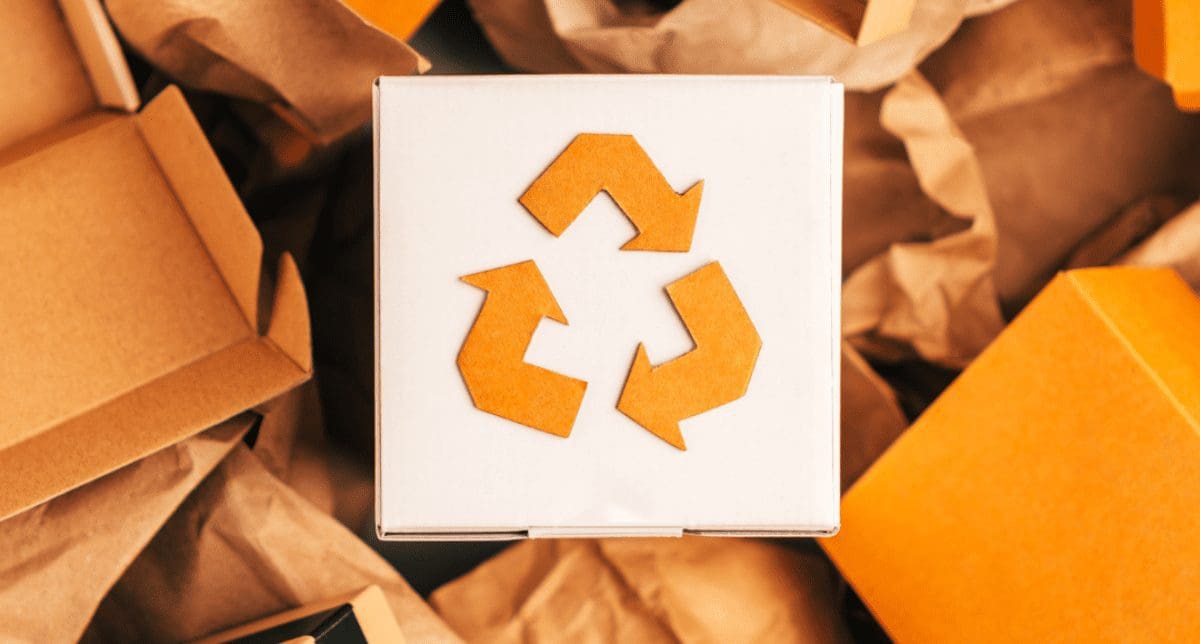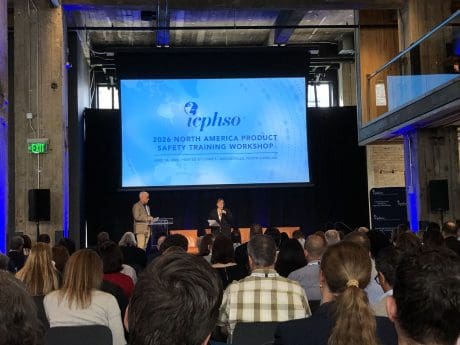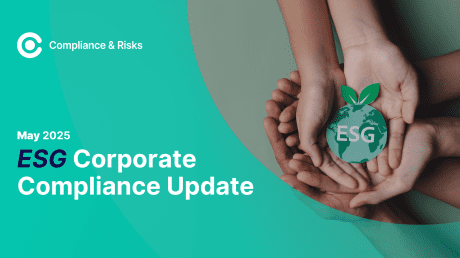
What’s Trending In Compliance? (December 2022)

At Compliance & Risks we help manufacturers, retailers and their supply chain partners to monitor and manage global regulations via C2P, our compliance knowledge management platform.
These are some of the top trending compliance topics that generated the most interest globally for October.
1. EU: Packaging and Packaging Waste, Draft Regulation, November 2022
On 30 November the European Commission published it’s long anticipated proposal to amend the Packaging and Packaging Waste Directive 94/62/EC. The draft regulation will apply to all packaging.
The draft regulation is underpinned by three main objectives:
- Prevent generation of packaging waste by:
– reducing the quantity of packaging waste
– restricting unnecessary packaging
– promoting reusable & refillable packaging solutions
- Make all packaging on the EU Market recyclable in an economically viable way by 2030
- Increase use of recycled plastics in packaging through mandatory targets
It is not clear yet when the new directive will be adopted. Commission proposals may take several years before they are agreed and enter force.
2. Italy: Environmental Labelling Obligations for Packaging, Guidelines, November 2022
On 22 November 2022, the Italian Ministry of Environment and Energy Security published the final version of the packaging labelling Guidelines in accordance with Art. 219 paragraph 5 of Legislative Decree 152/2006.
The final Guidelines have been updated to clarify that digital channels (e.g. App, QR code, website) may be used in full or partially to meet the labelling obligations. This revision has come about following the submission of comments by the EU Commission on the potential for the environmental label to go against the free movement of the goods principle, provided in the Treaty on the Functioning of the European Union (TFEU).
The Guidelines currently synopsis the obligations as follows;
- Producers must indicate the alphanumeric code provided for in Decision 97/129/EC on all packaging (primary, secondary and tertiary);
- All packaging must be labelled in the form and manner that the company considers most suitable and effective for achieving the goal, for which it is always allowed the use of digital channels (e.g. App, QR code, website) as a complete or partial alternative to the physical affixing of the labelling on packaging;
- Packaging destined for the consumer must also bear suitable inscriptions aiding its disposal;
- For plastic packaging made from polymers or polymer combinations not expressly provided for in Decision 97/129/EC, reference may be made to the UNI EN ISO 1043-1 standards for the identification of plastics not included in said Decision, and to the UNI EN ISO 10667-1 standards for the identification and recognition of recycled polymers.
Additionally, the Ministry confirmed that the labelling obligations do not apply to medication or medical devices, further information on this can be found in Italian on the Ministry’s website here.
3. India: E-Waste (Management) Rules, G.S.R. 801(E), 2022
On 2 November 2022, the Indian Ministry of Environment, Forest and Climate Change published the E-Waste (Management) Rules which shall apply to every manufacturer, producer, of electrical and electronic equipment (EEE), refurbisher and recycler involved in the manufacture, sale, transfer, purchase, and processing of e-waste or electrical and electronic equipment listed in Schedule I, including their components, consumables, parts and spares which make the product operational but shall not apply to:
- waste batteries as covered under the Battery Waste Management Rules, 2022;
- packaging plastics as covered under the Plastic Waste Management Rules, 2016;
- micro enterprise as defined in the Micro, Small and Medium Enterprises Development Act, 2006 (27 of 2006); and
- radio-active wastes as covered under the provisions of the Atomic Energy Act, 1962 (33 of 1962) and rules made there under.
Extended Producer Responsibility (EPR) and Registration:
The following entities will be covered under the EPR framework and are subject to registration:
- Manufacturer
- Producer
- Recycler
- Refurbisher
The manufacturer must:
- register on online portal created for the purpose;
- collect e-waste generated during the manufacture of any electrical and electronic equipment and ensure its recycling or disposal;
- file annual and quarterly returns in the prescribed Form on the portal of Central Pollution Control Board on or before end of the month succeeding the quarter/year to which the return relates
The producer must:
- register on the online portal created for the purpose;
- obtain and implement the Extended Producers Responsibility (EPR) target as per Schedule III and Schedule IV through online portal of the Central Pollution Control Board (CPCB);
- create awareness through media, publications, advertisements, posters, or by any other means of communication;
- file annual and quarterly returns in the prescribed Form on the portal on or before end of the month succeeding the quarter/year to which the return relates.
Procedure for storage of e-waste:
Every manufacturer, producer, refurbisher and recycler may store the e-waste for a period not exceeding one hundred and eighty days and shall maintain a record of sale, transfer and storage of e-wastes and make these records available for inspection. The storage of the e-waste will be done as per relevant rules/ guidelines.
Restriction of hazardous substances in EEE:
Chapter VII establishes the RoHS provisions in India, requiring every producer of electrical and electronic equipment and their components or consumables or parts or spares listed in Schedule I to ensure that new EEE and their components or consumables or parts or spares do not contain lead, mercury, hexavalent chromium, polybrominated biphenyls and polybrominated diphenyl ethers beyond a maximum concentration value of 0.1% by weight in homogenous materials, and of 0.01% by weight in homogenous materials for cadmium. Schedule II lists applications exempted from provisions of sub- rule (1) of rule 21.
These Rules supersede E- Waste (Management) Rules, 2016.
These Rules enter into force on 1 April 2023.
4. Saudi Arabia: General Safety of Electric Batteries, Technical Regulation (Edition 1), September 2018 – Amendment – (on deadlines, list of products in scope and related standard specifications, etc.) Technical Regulation, November 2022
In November 2022, the Saudi Arabian Standards, Metrology and Quality Organisation (SASO) issued an amendment to the Electric Batteries Technical Regulation of 2018.
The amendment changes Article 11(1) on transitional provisions to provide suppliers with a grace period of 180 days (the period was stated as 6 months) from the date of publication in the Official Gazette to comply with the requirements of this Technical Regulation. A one-year transitional period is also introduced in Article 11(2) in order to continue the trade of non compliant products which were lawfully placed on the market prior to the date of publication of this Technical Regulation.
The Regulation also updates the list of electric batteries’ products subject to this Regulation, and the relevant standards indicating the applicable technical requirements for batteries, which are set out in Annex (1). The following newly-adopted standards are added to the list:
- SASO IEC 62984-2 Lead-acid starter batteries- Part 1: General requirements and methods of test.
- SASO IEC 62281 Safety of primary and secondary lithium cells and batteries during transport.
- SASO-IEC-60095-1 Lead-acid starter batteries- Part 1: General requirements and methods of test.
- SASO-IEC-60095-6 Lead-acid starter batteries – Part 6: Batteries for micro-cycle applications.
- SASO IEC 62660-3 Secondary lithium-ion cells for the propulsion of electric road vehicles – Part 3: Safety requirements.
The following two standards have been removed from the list:
- SASO-1919 Lead-acid starter batteries for automobile engines and internal combustion machines,
- SASO-1920 Test methods for lead-acid starter batteries used in automobile engines and internal combustion
5. EU: Radio Equipment, Directive 2014/53/EU – Amendment – (on the making available on the market of a common charger for electronic devices) Directive (EU) 2022/2380
The long awaited amendment to the EU Radio Equipment Directive, introducing a one charger rule was finally adopted on 23 November 2022. This means that consumers will soon be able to use a single charging solution for all their electronic devices.
Per the proposal all mobile phones, tablets and cameras sold in the EU will have to be equipped with a USB Type-C charging port by the end of 2024. From spring 2026, the obligation will extend to laptops.
The measure is due to enter into force on 27th December 2022.
Stay Updated On Global Regulations
This information is based on the most viewed regulations on C2P this month. If you would like to find out more about how you can stay on top of global regulations, why don’t you Book a Demo with our team today?
Book Time With Our Team
Learn how C2P can help you stay ahead of regulatory changes and achieve uninterrupted market access.








